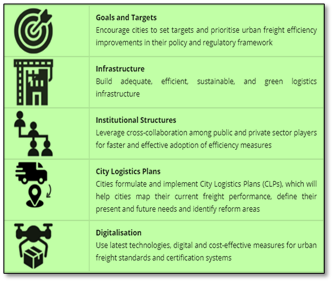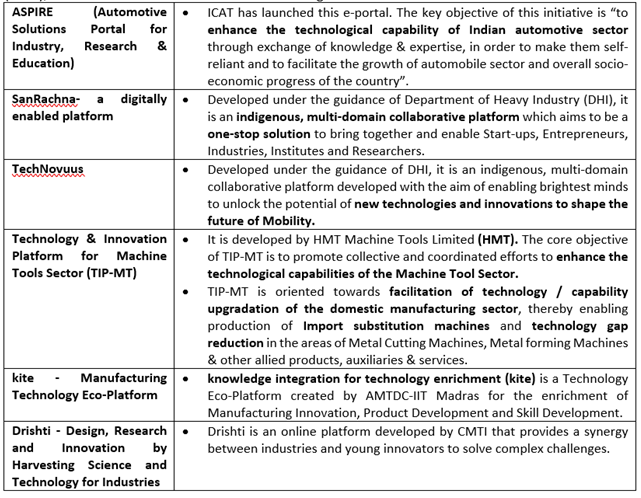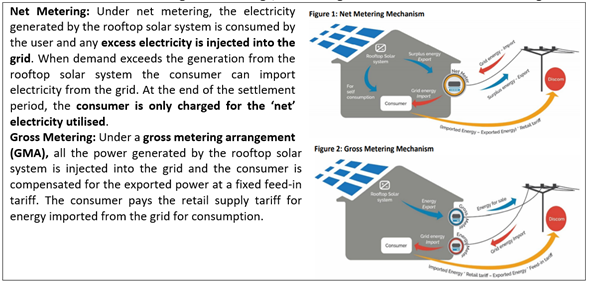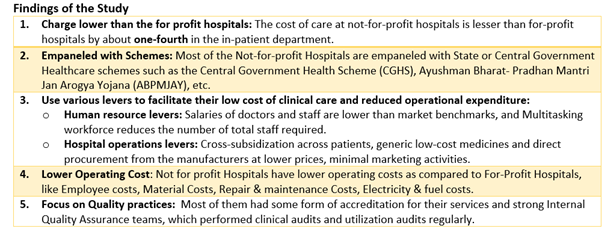Wednesday, 7th July 2021
Five Important Portals on Ayush sector
In News
Ministry of Ayush has recently launched five Important Portals on the Ayush sector.
About the News
- The Minister launched Clinical Trial Registry of India (CTRI) portal pertinent to Ayurveda Dataset along with AMAR, RMIS, SAHI and e-Medha portals.
- The Aayush ministry has launched these portals in pursuance of the visions of the Indian Digital Health Mission (NDHM).
- The National Digital Health Mission aims to develop the backbone necessary to support the integrated digital health infrastructure of the country. It will bridge the existing gap amongst different stakeholders of Healthcare ecosystem through digital highways
About the Portals

Sources: https://pib.gov.in/PressReleasePage.aspx?PRID=1732881
Excess irrigation over northern India shifting monsoons towards northwest
In News
Climate researchers at IIT Bombay investigated the impact of agricultural water use on the Indian Summer Monsoon.
Introduction- A Background
- Past several decades have witnessed an increase in irrigated cropland over South Asia. For instance, the irrigated area over India increased from 25.5 MHa in 1965 to over 65 MHa today.
- In the Kharif season (June to September) which corresponds to the summer monsoon season, irrigation water use also shows a significant increasing trend over the Indo-Gangetic plains during the 1971 to 2010 period.
- Paddy was a minor crop in the relatively drier northwest India till early 1970s, but availability of subsidised electric power has resulted in an extensive cultivation of paddy over this region as most of the irrigation water comes from groundwater pumping.
- Increasing population and the variability in monsoon rainfall is further exacerbating the reliance of irrigation on depleting groundwater resources.
Challenges with South Asian Monsoon (South West Monsoon)
- The summer monsoon precipitation over India has been decreasing post-1950, and this reduction is thought to be associated with the differential warming of the Indian Ocean and the land mass, land use land cover changes and changes in the anthropogenic aerosols.
- Observations also exhibit changes in the spatio-temporal characteristics of monsoon precipitation. For instance, Central India (region between 19ºN to 26ºN and 76ºE to 86ºE) has been experiencing extremes with higher intensity and spatial heterogeneity.
- Despite substantial evidence, the intrinsic interplay of regional land atmosphere dynamics and large-scale teleconnections (ENSO and Walker Circulation, Indian Ocean Dipole, Madden Jullian Oscillation etc.) makes it difficult to disentangle the causalities of observed changes in monsoon.
- Changes in land- atmosphere interactions affect both the north-northwestward progression of monsoon precipitation over land and the moisture recycling over the subcontinent. This indicate that agricultural water management has the potential to influence South Asian Monsoon (SAM).
Results of the Present Study
- The summer monsoon (June to September) precipitation exhibits an irrigation-induced increase over northwest India and a decrease over south-central India.
- The northwestward shift in seasonal precipitation is most prominent during the withdrawal phase of SAM in September.
- Central India has witnessed an increase in extreme rainfall in recent decades and this is also caused by an increase in irrigation and consequent increase in evapotranspiration (the sum of evaporation from the land surface plus transpiration from plants).
- The physical connection of irrigation to the observed changes in precipitation can be the intensified moisture transport that impacts the terrestrial redistribution of atmospheric moisture. Irrigation cools and moistens the lower troposphere, which has opposing effects on atmospheric stability.
Significance
The study establishes that monsoon precipitation is sensitive to the choice of irrigation practices in South Asia and can help plan agricultural practices in this region. Changes in the spatial pattern of late season precipitation have implications for the decisions relevant to crop rotation and agricultural planning.
Source-
Draft anti-trafficking Bill
In News
The Ministry of Women and Child Welfare invited suggestions and comments for its Trafficking in Persons (Prevention, Care and Rehabilitation) Bill, 2021.
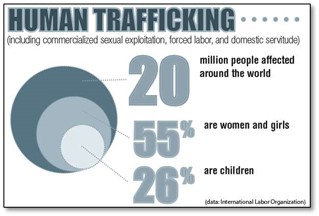
About the News
- The objective of the bill is to prevent and counter trafficking in persons, especially women and children, to provide for care, protection, and rehabilitation to the victims, while respecting their rights, and creating a supportive legal, economic and social environment for them and also to ensure prosecution of offenders, and for matters connected therewith or incidental thereto.
- The Bill has increased the scope of the nature of offenses of trafficking as well as the kind of victims of these offenses, with stringent penalties including life imprisonment, and even the death penalty in cases of an extreme nature.
Key Features
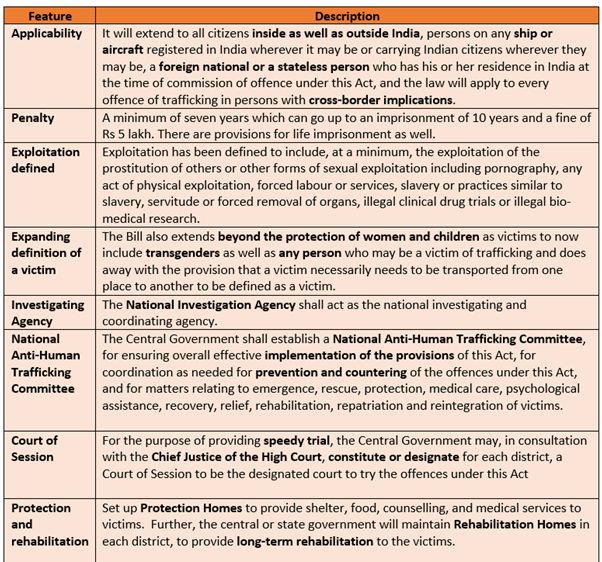
Revamped Distribution Sector Scheme
In News
The Union Cabinet has approved a Reforms-based and Results-linked, Revamped Distribution Sector Scheme.
About the Scheme

Why have earlier distribution sector initiatives failed to achieve Success?
Distribution is the most important link in the entire power sector value chain. Some of the schemes in this sector have been UDAY, Integrated Power Development Scheme (IPDS) for strengthening of sub-transmission and distribution networks in the urban areas, Deendayal Upadhyaya Gram Jyoti Yojana (DDUGJY) and National Electricity Fund (NEF). Issues with earlier initiatives are as follows -
- Insufficient Monitoring mechanism: Due to inadequate metering and data collection system in place, utilities have not been able to conduct energy audit, which is crucial for any energy business. Discoms do not have proper load monitoring and control mechanisms (e.g. SCADA, Distribution Control Centre, telecommunications etc.), which results in to haphazard control of the demand and often leads to loss of revenue and inconvenience to the consumers.
- Accountability and Technology Issues: The Schemes could not reduce the high Aggregate Technical & Commercial (AT&C) losses due to high Transmission and Distribution (T&D) losses coupled with low collection efficiency. Low level of collection is attributable to lack of employees’ accountability, inadequate collection facilities, limited usage of advanced technology (e.g. payment through ECS, cards, special centres like e-Seva centres), billing errors etc.
- Lack of Consumer Records: Schemes have not put in mechanism for maintaining consumer database and asset database, which can be addressed through IT and communication solutions. Most utilities maintain manual records of consumers. This leads to mismanagement and losses.
- Revenue & Expenditure gaps: The gap between discoms’ costs (average cost of supply) and revenues (average revenue realised), which was supposed to have been eliminated by now, stands at Rs 0.49 per unit in the absence of regular and commensurate tariff hikes. For the high-income southern states of Tamil Nadu, Andhra Pradesh, and Telangana, this gap between costs and revenues is significantly higher.
- Electrification and Support structure mismatch: The schemes have not been able to address the gap between increasing electrification and related supporting structural mechanism. So, as household connections are ramped up, to support higher levels of electrification, cost structures need to be reworked, and the distribution network (transformers, wires, etc) would need to be augmented — in the absence of all this, losses are bound to rise.
How does the Revamped Distribution Sector Scheme try to address the lacunas of previous schemes?
- Conditional Support: The scheme will provide conditional financial assistance to DISCOMs for strengthening of supply infrastructure. The assistance will be based on meeting pre-qualifying criteria as well as upon achievement of basic minimum benchmarks by the DISCOM evaluated on the basis of agreed evaluation framework tied to financial improvements.
- Focus on Operational Efficiency: The scheme seeks to improve the operational efficiencies through smart metering & upgradation of distribution infrastructure, including the segregation of agriculture feeders & system strengthening, in order to enable state owned distribution utilities to curtail the AT&C losses. Every 1% reduction in AT&C loss level will result in a cost reduction/savings of Rs.50 billion every year for discoms.
- Savings through Feeders: The use of distributed solar power projects for supply to agriculture consumers through agriculture feeder route is estimated to entail significant savings (estimated at Rs. 140 crore per billion unit of agriculture load met through solar) to discoms through reduction in power purchase cost and lower distribution losses, given the highly subsidised nature of power tariffs to agriculture consumers.
- Thrust on Smart Metering: A key feature of the Scheme is to enable consumer empowerment by way of prepaid Smart metering to be implemented in Public-Private-Partnership (PPP) Smart meters would allow consumers to monitor their electricity consumption on a routine basis instead of monthly basis, which can help them track usage of electricity.
- Leveraging AI: Artificial Intelligence would be utilized to analyze data generated through IT/OT devices including System Meters, prepaid Smart meters to prepare system generated energy accounting reports every month, to enable DISCOMs to take informed decisions on loss reduction, demand forecasting, Time of Day (ToD) tariff, Renewable Energy (RE) Integration and for other predictive analysis.
- Effective Monitoring and Evaluation: Supervisory Control and Data Acquisition (SCADA) in all Urban area and Appropriate third party/parties will be appointed by Nodal Agency to verify Discom achievements. Niti Aayog will be involved in the process of selection of Independent third parties. Quality Assurance will be ensured by making the Discom solely responsible & accountable for assuring quality in the scheme works. Discom shall formulate a comprehensive Quality Assurance (QA) and Inspection Plan.
Conclusion
Power discoms are the weakest link in the electricity value chain, plagued by low collection, increase in power purchase costs, inadequate tariff hikes and subsidy disbursements, and mounting dues from government departments. The scheme will enable discoms to work with cutting edge technology and the state governments will have to commit to reduce their losses. It was hoped that states will be politically aligned with the Centre and help India achive Sustainable Development Goals (SDG) 7 that calls for “ensuring access to affordable, reliable, sustainable and modern energy for all.
Sources: https://pib.gov.in/PressReleasePage.aspx?PRID=1731473
https://dhbvn.org.in/staticContent/tender/Newscheme/PPT_for_states_reforms%20scheme.pdf
https://powermin.gov.in/en/content/distribution-0
https://www.icra.in/Media/OpenMedia?Key=8346e2c5-3e26-4ebc-8a04-e860616975b0
This Day in History - Damodar Valley Corporation (DVC)
On July 7 1948, India’s first multi-purpose river valley project, the Damodar Valley Coorporation came into existence. The Damodar Valley Corporation (DVC) is the most prominent multipurpose power project of Jharkhand. The corporation operates several thermal plants and hydroelectric dams not only in Jharkhand but also in neighbouring West Bengal. The Damodar Valley Corporation, constructed four multipurpose dams to form a series of reservoirs—Tilaiya, Maithon, Konar, and Panchet Hill. The project provides for flood control, hydroelectricity, coal-fired thermal power plants, irrigation chiefly in West Bengal. Damodar River, river in northeastern India, rising with its many tributaries, notably the Bokaro and Konar, in the Chota Nagpur plateau of south-central Bihar state. It follows a generally eastward course for 368 miles (592 km) through West Bengal to join the Hugli (Hooghly) River southwest of Kolkata (Calcutta).

Sources: https://www.britannica.com/place/Damodar-River#ref109294
Image of the Day – Discrete Auroras
This is image of glowing atmospheric lights in the Mar’s night sky, known as discrete auroras. The image has been captured by the UAE’s Hope spacecraft. Unlike auroras on Earth, which are seen only near the north and south poles, discrete auroras on Mars are seen all around the planet at night time. Auroras are caused when charged particles ejected from the Sun’s surface — called the solar wind — enter the Earth’s atmosphere. These particles are harmful, and our planet is protected by the geomagnetic field, which preserves life by shielding us from the solar wind. On Mars, the disjointed magnetic fields channel the solar wind to different parts of the Martian atmosphere, creating “discrete” auroras over the entire surface of the planet as charged particles interact with atoms and molecules in the sky– as they do on Earth.

Source: https://indianexpress.com/article/explained/uae-hope-orbiter-discrete-auroras-mars-7390298/
Sir Chettur Sankaran Nair
- Context: Decision to produce the biopic of Sir Chettur Sankaran Nair.
- He was an acclaimed lawyer and judge in the Madras High Court and one of the early builders of the Indian National Congress who had also served as its president in 1897.
- In 1902 Lord Curzon appointed him a member of the Raleigh University Commission. In 1904 he was appointed as Companion of the Indian Empire by the King-Emperor and in 1912 he was knighted. In 1915 he became part of the Viceroy’s Council, put in charge of the education portfolio.
- He firmly believed in India’s right for self-government and in 1919, he played an important role in the expansion of provisions in the Montagu-Chelmsford reforms.
- Nair wrote a book ‘Gandhi and Anarchy’, which was published in 1922 in which he spelt out his critique of Gandhi’s methods of non-violence, civil disobedience and non-cooperation which he believed were destined to lead to riots and bloodshed.
- He also accused O’Dwyer (Lieutenant-Governor of Punjab) in this book for being responsible for the atrocities at the Jallianwala Bagh massacre.

Primary source: https://indianexpress.com/article/explained/chettur-sankaran-nair-lawyer-british-movie-7390007/
Open Network for Digital Commerce (ONDC)
- Context: The Department for Promotion of Industry and Internal Trade (DPIIT) has set up a nine-member panel to suggest measures to design an ONDC.
- ONDC aims at promoting open networks developed on open-sourced methodology, using open specifications and open network protocols, independent on any specific platform which will curb “digital monopolies”.
- Making a software or a process open-source means that the code or the steps of that process is made available freely for others to use, redistribute and modify it.
- For example, the operating system of Apple’s iPhones iOS is closed source, meaning it cannot be legally modified or reverse engineered, while Google’s Android operating system is open-source, and therefore it is possible by smartphone OEMs (original equipment manufacturer) such as Samsung, Xiaomi, OnePlus, etc to modify it for their hardware.
- ONDC is expected to digitise the entire value chain, standardise operations, promote inclusion of suppliers, derive efficiency in logistics and enhance value for consumers.

Primary source: https://indianexpress.com/article/explained/open-network-for-digital-commerce-project-explained-7391486/
Social Bonds - Edukemy Current Affairs
- Context: Ghana is planning to issue social bonds or social impact bonds (SIB) of up to $2 billion, which would make it the first African country to sell debt to fund development programs.
- A social impact bond (SIB) is a contract with the public sector or governing authority, whereby it pays for better social outcomes in certain areas and passes on the part of the savings achieved to investors.
- A social impact bond is not a bond, per se, since repayment and return on investment are contingent upon the achievement of desired social outcomes.
- If the objectives are not achieved, investors receive neither a return nor repayment of principal.
- SIBs derive their name from the fact that their investors are typically those who are interested in not just the financial return on their investment, but also in its social impact.
- They are also known as Pay-for-Success contracts.

Primary source: https://www.investopedia.com/terms/s/social-impact-bond.asp
Picture source: https://qz.com/africa/2013386/ghana-plans-to-issue-a-social-bond/
As Reliance promises leap into clean energy, green economics becomes mainstream - HT
Essence: At the end of June this year, Mukesh Ambani, chairman of Reliance Industries, announced a ₹75,000 crore (US$10bn) investment plan into clean energy in India over the next three years. This article analyses the rationale behind this move and its impact on the clean energy sector. It also stresses on the need to address policy uncertainty which can be a crucial bottleneck in the adoption of renewable energy.
Why you should read this article?
- Understand the rationale behind investing in sustainable energy by the biggest oil and gas company in India such as access to capital through ESG funding route, diversification and increase in its footprint in the clean energy space, etc.
- Know about the benefits of such decision such as driving down renewable energy prices, scaling up domestic manufacturing, strengthen India’s input value chain and help protect the country from the vagaries of price volatility internationally among others.
- Identify policy reforms such as Time of Day (TOD) pricing and improve the financial health of distribution companies (discoms) which will facilitate adoption of renewable energy.
Seeking a paradigm shift in mental health care – The Hindu
Essence- This article is written in backdrop of mental health care system service provided by India. As far-sighted changes in policy and laws fails to meet international human rights standards, now India should develop a responsive care system and need to account cultural, social, and political contexts. We need to understand mental health conditions for what they are and for how they are associated with disadvantage. Several NGOs in India are already doing so that we can provide a better general health, quality of life and social functioning. The recent advisory issued by the Supreme court and High Court of Madras regarding vaccination of people with mental conditions raises several concerns which can be tackled through small emergency care and recovery centres for those who need crisis support instead of larger hospitals, and long-term inclusive living options in an environment that values diversity and celebrates social mixing, will reframe the archaic narrative of how mental health care is to be provided.
Why should you read this article?
- To get an overview of mental health care services provided by different countries of the world and what best practices India can adopt.
- What are the drawbacks of India’s current mental health care services and what possible steps India should take to develop it as a responsive care system?
- To know the challenges to get people with mental conditions vaccinated and what could be the possible solution.
Odisha government constructs 10,000 rainwater harvesting structures
Background
- Odisha receives rainfall from 1200 mm to 1800 mm annually. However, its spatial distribution is uneven and erratic.
- About 76% of rainfall is during monsoonal season while remaining 24% is throughout the year.
Campaign Catch the Rain: Where it Falls and When it Falls
- Timely Intervention: Before onset of south-west monsoon, state has planned to build 10,000 rainwater harvesting structures to facilitate water conservation and groundwater recharge
- Respects local topography: Rainwater harvesting structures deployed the technology of arresting the surface runoff where it falls using contour techniques.
- In sync with other government programme: campaign is in sync with Mukhyamantri Karma Tatpara Abhiyan Yojana (MUKTA) which aims to provide employment for migrant labourers.
- Strikes at root cause: It addresses the key challenge of water scarcity in urban areas.
Intended benefits of Rain Water Harvesting Structures (RWHS)
- Cost effective: Such structures involves low cost as compared to bigger engineering structures like dam
- Recharge of ground-water: RWHS improves the quality and quantity of groundwater.
- Ecological benefits: RWHS can reduce soil erosion, flooding, and pollution of ground water etc.
Other similar initiatives taken by different states
- Arvari Project of Rajasthan.
- Ralegan Siddhi Project of Maharashtra
- Birkha Bawari in Jodhpur, Rajasthan
- RWH project in Goa University
Share the article
Get Latest Updates on Offers, Event dates, and free Mentorship sessions.

Get in touch with our Expert Academic Counsellors 👋
FAQs
UPSC Daily Current Affairs focuses on learning current events on a daily basis. An aspirant needs to study regular and updated information about current events, news, and relevant topics that are important for UPSC aspirants. It covers national and international affairs, government policies, socio-economic issues, science and technology advancements, and more.
UPSC Daily Current Affairs provides aspirants with a concise and comprehensive overview of the latest happenings and developments across various fields. It helps aspirants stay updated with current affairs and provides them with valuable insights and analysis, which are essential for answering questions in the UPSC examinations. It enhances their knowledge, analytical skills, and ability to connect current affairs with the UPSC syllabus.
UPSC Daily Current Affairs covers a wide range of topics, including politics, economics, science and technology, environment, social issues, governance, international relations, and more. It offers news summaries, in-depth analyses, editorials, opinion pieces, and relevant study materials. It also provides practice questions and quizzes to help aspirants test their understanding of current affairs.
Edukemy's UPSC Daily Current Affairs can be accessed through:
- UPSC Daily Current Affairs can be accessed through Current Affairs tab at the top of the Main Page of Edukemy.
- Edukemy Mobile app: The Daily Current Affairs can also be access through Edukemy Mobile App.
- Social media: Follow Edukemy’s official social media accounts or pages that provide UPSC Daily Current Affairs updates, including Facebook, Twitter, or Telegram channels.

